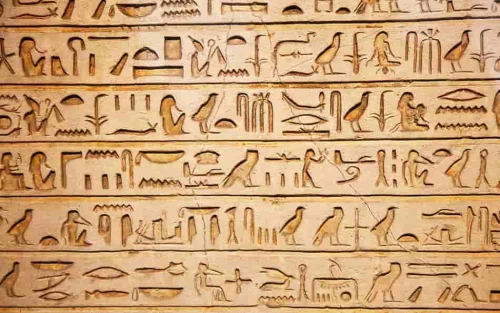Cultural, historical, adventure, and custom customized trips are just a few of the tours that Deluxe trips offer in Egypt and Jordan.

Ancient Egypt is a very ancient civilization famous for its grandeur, mysteries, and high culture; right at the core of Egypt's history lays the lineage of pharaohs, the kings and queens, who governed Egypt for centuries. Names of ancient Egyptian pharaohs not only identify them but highlight their rank, achievement, and divine right to rule. The title and name of ancient Egyptian pharaohs, as well as the significance of these royal appellations, are what this article aims to deliberate on as they fit into the history of Egypt.
The ancient Egyptians saw their kings and queens-also referred to as pharaohs-as divine rulers who were chosen by the gods to ensure order and balance (Ma'at) existed in the world. With the bestowal of their names and titles, the kings of Egypt would lay claim to different facets of their power, their heritage, and their divine right over man. The names assigned to them were, therefore, very much more than dainty-mere names; more precisely, they demonstrated all the more the king's duty as both a political leader ruling on Earth and an incarnation of the deity.
The summary of the names is that there are five in total, corresponding to five sets of titles and areas of the identity of a ruler. These names were normally used in the official inscriptions, monumental buildings and royal cartouches.
Horus is the primeval and honorific title conferred upon the Egyptian rulers. It represents the divine association of the king with Horus, the falcon god who acted as the protector of the king. This title was primarily used during the earlier years of the king's reign as a sign of might and sovereignty. Horus name would also validate the divine legitimacy of the ruler and be associated with the period of that pharaoh's reign.
The Nebty name, called 'Two Ladies Name,' was associated with the goddesses Nekhbet (the vulture goddess of Upper Egypt) and Wadjet (the cobra goddess of Lower Egypt). It symbolized the unification of the two lands of Egypt under the pharaoh's rule. The Nebty name placed emphasis on the pharaoh's obligation to ensure the maintenance of peace and unity between the Upper and Lower Egypts.
This name was yet another name used by the pharaohs, representing the connection of the king himself to Horus along the lines of wealth, prosperity, and divine protection of the land from that point on. Indeed, the Golden Horus name manifested the role of assuring political stability and prosperity within Egypt and that of the pharaoh.
The Throne name, Nesu Biti, would be of prime importance to a pharaoh, as it was the name in the royal cartouche. This name represented sort of coronation title conferred upon the pharaoh when he ascended the throne. It was usually conferred in the context of the divine and royal lineage of the king and glorified the ruler's relationship with the gods. The Throne name would usually contain some co-reference to the achievements or divine qualities of the king, thus marking the beginning of his reign.
The birth name, also known as the Sa Ra name, was accorded to the pharaoh at birth. This name usually included a religious or symbolic meaning, signifying something pertaining to the divine birthright of the ruler, which in turn emphasized that the pharaoh was destined by the gods to rule over Egypt. The significant part about the Birth name is that it was often the most personal of the five titles, and also used by the king's subjects in referring to them.
Hundreds of such names have survived through ages and give a glimpse into the history of mighty ancient Egyptians. All names then had meaning and all narrated part of the pharaoh's glories, his divine associations, representatives of his own and theirs weighed down with expectations of him.
Tutankhamun or "King Tut" is among the most famous relatives in history, famous in Egypt. King Tut ascended to the throne at the ripe age of nine and ruled for a short time, from between 1332 and 1323 BCE. His name means "Living Image of Amun," and finds its source in the short life of the king himself, Amun-Ra being one of the deities well-known in the whole of Egyptian religion.
Famed for having the richest grave found so far, it's not such a surprise that he became known to the masses. It was not until 1922, when his tomb was found and opened almost intact, and he was found to be laden with treasures. His reign therefore can be characterized as the restoration of the people after the monotheistic reign of his predecessor Akhenaten.
Often considered as the Greatest of all pharaohs, Ramses II is called sometimes Ramses the Great. His name means Born of Ra, the sun god, and pertained hence to the main object of worship in Egyptian religion. Such things have marked his illustrious reign: sixty-six years of almost uninterrupted and undisputed rule, memorable war exploits, and magnificent building projects, like the great temples at Abu Simbel.
These secured the borders of Egypt and gave way to one of the greatest rapprochements in ancient history, such as the very famous Treaty of Kadesh with the Hittites during his time. This meant that he had divine birthright pharaonic names and usually denoted that he had a very strong rapport with the gods.
Cleopatra VII is possibly the most recognizable name in relation to an ancient Egyptian pharaoh. Literally translating into "Glory of Her Father," it connoted both her princely ancestry and her divine connections. The last reigning queen of the Ptolemaic monarchy of Egypt before it fell to the dominion of Rome, Cleopatra was more than just a queen but an actor and a player in a significant drama.
Her famous acts were mostly related to her political shrewdness, prompt cohabitation with Julius Caesar and Mark Antony, and other moves to revive Egypt to its old glory. Despite living under the Romans, Cleopatra was a pharaoh and Egypt still recognized her culture and blood in the pharaoh's blood.
Not only would they maintain the social and religious textures of the ancient Egyptians, but personal names would also provide the line through which all of this would take place. Even names that could play a role in personal identification and played a role as divine mediators between the god and their people. Monoliths of inscription
The pharaonic names of the rulers of Egypt bear a stamp on modern culture. Their monuments, tombs, and temples still bear the names and titles of these great kings. An example would be the Valley of the Kings, where lie many pharaohs, an everlasting memory of the majestic reigns of the pharaohs.
The presiding sites, together with one of the most celebrated-the famous Giza Pyramids, give visitors a once-in-a-lifetime experience of the magnitude and importance of the royal legacy in ancient Egypt. For those excited to learn more about ancient Egyptian royalty, the Temple of Hatshepsut and Temple of Karnak narrate messages that speak of mighty rulers in Egypt's history.
For instance, in Luxor Temple, Temple of Philae and the Colossi of Memnon, visitors would get an eye on the stylistically rich royal history of an ancient Egyptian civilization.
Names of the ancient Egyptian pharaohs really surpass time and enthrall historians, archeologists, and travelers. They talk about rulers who did rule, shaped the happenings of Egypt, and are remembered beyond time by monuments, temples, and history, in terms of names and meanings or powerful titles. Thus, ancient Egyptian kings remain immortal beings having influences reverberating throughout history.
Be sure not to miss getting into the fascinating history of ancient Egypt without visiting any of these ancient ruins and temples that tell the tale of vanished pharaohs. To add even more to the former glory of the majestic Egyptian heritage, start your research by investigating the Temple of Kom Ombo, the Valley of the Queens, and ultimately, the Abu Simbel Temple
Discover now our answers to the most common questions that may come to your mind about tourism and trips to Egypt
Cultural, historical, adventure, and custom customized trips are just a few of the tours that Deluxe trips offer in Egypt and Jordan.
The Dead Sea, Petra in Jordan, the Pyramids of Giza, Luxor's historic temples, and many other famous sites can be expected to be explored with Deluxe Tours.
offer a hassle-free holiday, Deluxe Tours' packages generally include lodging, transport, meals, guided tours with experienced local experts, and entry fees to attractions.
Spring (March to May) and fall (September to November) offer the finest weather for sightseeing and outdoor activities, making those months the best times to visit Egypt and Jordan.
These two countries are close by, only a 1.5-hour flight apart, and when combined, offer a variety of distinctive experiences. We advise you to spend at least 12 days visiting both countries for a truly unforgettable experience
Combining the eclipse viewing with visits to historic sites like the Pyramids of Giza, the Valley of the Kings, and a Nile River cruise are highly recommended.
